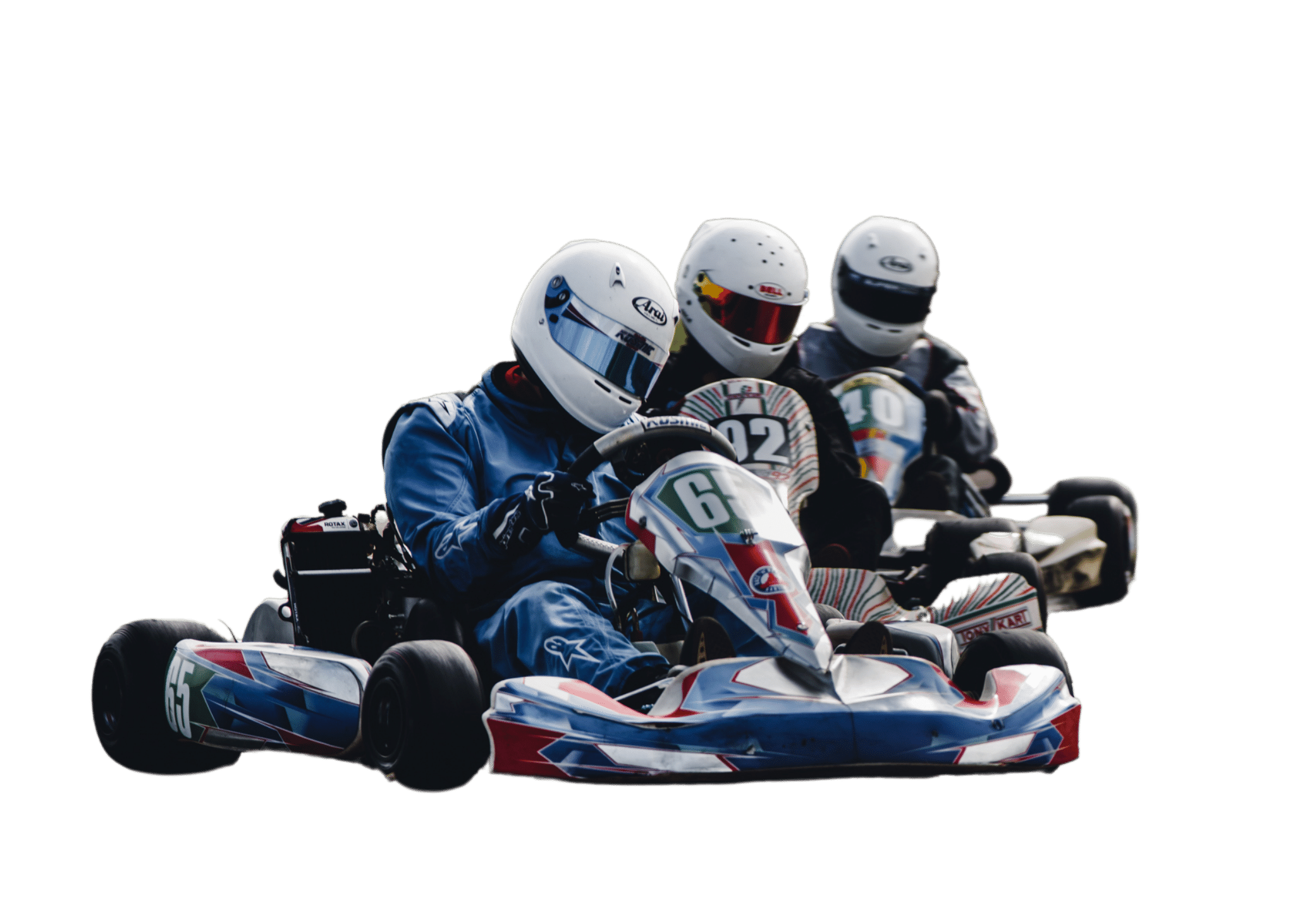
As you transition from mere karting aficionado to the architect of your own racing experiences, you’ll discover that the devil is indeed in the details. You’re not just playing with tools; you’re unlocking a new realm of mastery over your four-wheeled steed.
The path of the self-reliant karting mechanic is one of empowerment, where every adjustment you make translates to improved performance and a more intimate understanding of your kart’s language.
As you stand at the precipice of this exhilarating venture, you must be wondering what secrets lie within the chassis, what knowledge awaits in the heart of the engine, and how deep the satisfaction of self-sufficiency runs.
Stick with me, and together we’ll explore how taking the wrench into your own hands is not just a task, but a transformative rite of passage.
Taking on the role of your own kart mechanic presents a challenge that requires a detailed, hands-on understanding of your machine’s intricacies and behaviors on the track.
You’ll face karting challenges head-on, diagnosing issues like understeer or a sputtering engine with a practiced ear and a critical eye.
The self-maintenance advantages are numerous: you’ll fine-tune your kart’s performance, making adjustments that align with your driving style and the demands of each circuit.
Mastering self-maintenance equips you with the tools to fine-tune your kart’s performance, ensuring it’s perfectly adapted to both your driving style and the track’s demands. By embracing challenges head-on, you’re not just tweaking your machine; you’re also honing your problem-solving capabilities.
Here’s why taking the reins of your kart’s upkeep is worth the effort:
Developing your mechanical aptitude requires a hands-on approach, delving into the intricacies of kart systems and components with precision and care.
You’ll begin by mastering the basics: understanding the engine’s combustion cycle, the role of the chassis in handling, and the importance of tire pressure in grip.
As you progress, focus on honing your diagnostic abilities. Listen for irregular engine sounds, feel for vibrations indicating misalignment, and observe tire wear patterns.
Each clue reveals critical insights into your kart’s condition.
Building on your foundational knowledge of kart systems, it’s crucial to understand each component’s role and how they interact for optimal performance. Mastering kart adjustments and employing advanced tuning techniques demands a meticulous approach.
Here’s what you need to focus on:
Each of these areas requires a technical, experienced touch. Dive into the specifics, and you’ll not only enhance your kart’s performance but also your prowess as a mechanic.
To effectively diagnose and resolve karting issues, you’ll need to adopt systematic troubleshooting strategies that target specific symptoms and their underlying causes.
Begin by noting the problem’s exact nature, whether it’s a loss of power, unusual noises, or erratic handling.
Next, isolate the systems that could be contributing to the issue. For power loss, inspect the fuel system, air intake, and spark plugs. If you’re diagnosing issues related to noises, check for loose components or bearing wear.
Utilize a process of elimination, methodically testing each potential cause. Keep detailed records of your observations and actions.
Remember, successful troubleshooting techniques hinge on a keen understanding of kart mechanics paired with a methodical approach.
Your goal isn’t just to fix the problem temporarily, but to prevent its recurrence with a thorough and precise solution.
While honing your troubleshooting skills is critical, it’s equally important to master clear and concise communication with professional mechanics when complex issues exceed your expertise. Effective mechanic communication techniques are vital to convey the nuances of your kart’s performance issues. Use technical language that’s both specific and accurate to describe the problem, ensuring the mechanic can quickly understand and address the issue.
Mastering your own kart maintenance empowers you with the independence to make on-the-fly adjustments crucial for peak performance during races.
You’ll become adept at fine-tuning your machine, from calibrating tire pressures to adjusting chassis balance.
This isn’t just about wrenching; it’s about developing skills that translate into confidence on the track.
Navigating the decision between tackling kart maintenance yourself and seeking professional help hinges on assessing your technical expertise and the complexity of the issue at hand. When considering self service vs professional expertise, weigh cost saving considerations against potential risks.
Here’s what to ponder:
Understanding whether to tackle maintenance yourself or seek professional help is crucial. It’s important to have the right educational tools for mechanics at your disposal to enhance your skill set and knowledge base.
Dive into online tutorials that provide step-by-step instructions and detailed visuals on kart maintenance protocols. These digital resources allow you to learn at your own pace, revisiting complex procedures as needed.
Mentorship programs are equally invaluable. Pairing up with an experienced kart mechanic offers hands-on learning and insights into the nuances of karting mechanics. This mentorship can fill gaps that online tutorials might leave, providing you with context-specific advice and tricks of the trade.
With these resources, you’ll be equipped to handle your kart’s maintenance with precision and confidence.
Engaging with karting communities offers you the chance to share knowledge, discuss technical nuances, and gain insights from seasoned racers and mechanics. By diving into these networks, you’re not just building relationships; you’re constructing a robust support network essential for your growth as a karting mechanic.
As you navigate through these communities, remember that each interaction sharpens your technical acumen and solidifies your standing within the karting world.
Exploring career opportunities beyond the racetrack, your expertise as a kart mechanic can open doors to a variety of technical roles in the wider automotive industry. Your hands-on experience with engine tuning, chassis setup, and data analysis not only showcases your technical acumen but also demonstrates a problem-solving mindset. This multifaceted skill set is highly sought after in sectors such as automotive engineering, motorsport team management, and high-performance vehicle maintenance.
When considering career transitions, you must weigh financial considerations. You’ve honed the ability to optimize resources and manage budgets through karting. These fiscal skills become invaluable in roles that require cost-control and efficiency.
Whether you’re aiming for a position at a renowned racing team or a specialized automotive workshop, your background as a kart mechanic provides a solid foundation for a thriving career.
Mastering the art of budgeting is crucial for sustaining your passion for karting without breaking the bank. As you delve into the world of karting budgeting, focus on precision and pragmatism to manage your finances effectively.
Here are essential cost saving tips to ensure your karting journey is as economical as it’s thrilling:
Adopting these strategies will help you maintain a healthy karting budgeting plan, allowing for continuous improvement and enjoyment on the track.
When balancing costs and expertise in karting, you must judiciously decide when to invest in professional help and when to apply your own mechanical skills to maintain and enhance your kart’s performance. Cost saving strategies are crucial in this motorsport, where expenses can quickly spiral.
Tackling routine tasks—like brake inspections, tire changes, and oil checks—yourself underscores the importance of regular maintenance, preventing costly repairs down the line. However, recognize the complexity of certain repairs that might exceed your current skill set.
Investing in expert services for advanced issues ensures your kart remains competitive and safe. Striking this balance between DIY maintenance and professional intervention will optimize your budget while cultivating a robust technical foundation in karting mechanics.
To ensure your safety during kart maintenance, always use tool safety techniques and wear protective gear, such as gloves and goggles, to prevent injuries from sharp objects or chemical splashes.
You must familiarize yourself with competition rules and ensure kart modifications comply with legal standards to avoid penalties and maintain safety on the track. Always check the latest regulations before tweaking your kart.
You need to check your kart’s insurance clauses and warranty conditions; self-servicing could void your coverage, requiring a certified mechanic for claims or repairs to maintain validity. Always review policy specifics carefully.
You’ll need to check local regulations on hazardous waste to responsibly recycle used kart parts, minimizing environmental impact. Specialized facilities handle such materials; never toss them in regular trash or drains.
You don’t need formal certifications for kart maintenance, but attending mechanic workshops can boost your skills and credibility when helping others with their karts, ensuring you’re recognized for your technical prowess.
You’ve revved up your karting game, mastering every bolt and bearing. With a mechanic’s savvy, you now finesse your machine, cutting costs and sharpening skills.
You’re in the driver’s seat, both on the track and under the hood. Embrace this mechanical symphony, and let your kart echo your prowess.
Keep learning, keep tuning, and let the thrill of self-reliance propel you to new speeds.
Your karting journey, now truly yours, races ahead.

